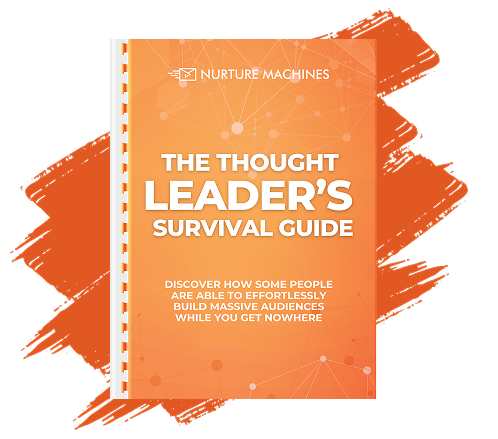In today’s hypercompetitive marketplace, organizations seek effective ways to build lasting relationships that drive long-term loyalty and revenue growth. Enhancing customer experience goes far beyond streamlined transactions or prompt support—it involves creating an ecosystem that caters to the emotional, functional, and social needs of consumers across every touchpoint. Customer experience is rooted in how people perceive each interaction with the brand, whether online or offline, and how these interactions influence their willingness to return, recommend, and advocate for the business. This article explores strategies that help organizations enhance customer experience and build enduring loyalty by examining feedback channels, mapping customer journeys, and employing technology-driven methods such as CRM systems and AI chatbots.
The article will explore various aspects—from the human side of customer service to technical implementations that support streamlined processes. The content emphasizes understanding consumer behavior, personalizing interactions, and simplifying support experiences. For marketing professionals, these insights help turn every interaction into a competitive advantage. Instead of treating customer experience as a one-off project, companies must foster a culture where every department—from leadership to digital marketing—is aligned toward delivering exceptional service. When executed well, this integrated approach improves satisfaction, reduces churn, elevates customer lifetime value, and enhances brand reputation.
This guide is meant for decision-makers, consultants, and thought leaders aiming to nurture enduring loyalty through actionable strategies and innovative tools. It stresses the importance of a customer-first mentality embedded in every facet of operations. By measuring success through analytical standards and iterating based on actionable feedback, companies build a sustainable foundation for retention and growth.
Transitioning now to key insights, the main takeaways of the article are summarized below.
Key Takeaways
- Building customer loyalty requires a holistic approach spanning feedback, personalization, and streamlined processes.
- Technology such as CRM systems and AI-driven chatbots is critical in unifying customer interactions and boosting satisfaction.
- A customer-first culture with well-trained employees and leadership buy-in ensures every touchpoint strengthens loyalty.
- Continual tracking with KPIs such as Net Promoter Score provides invaluable guidance for iterative improvements.
Comprehending Your Customers to Foster Loyalty

Understanding customers deeply is the cornerstone of improving customer experience. Organizations that gather actionable data from online surveys, social media analytics, and direct feedback can tailor interactions to meet unique needs and anticipate future challenges.
Gathering Actionable Customer Feedback Effectively
Effective feedback is gathered through multiple touchpoints—online chat, post-purchase surveys, and face-to-face interactions—that quickly reveal pain points and unmet expectations. When companies use sentiment analysis tools, they can link shifts in satisfaction scores to operational changes. For instance, real-time surveys after interactions can highlight areas like reduced wait times or enhanced personalization. Such data-driven insights support decisions in workforce management and customer segmentation, ultimately reinforcing loyalty through improved brand perception and word of mouth.
Mapping the Complete Customer Journey for Deeper Insights
Mapping the customer journey means creating visual representations of every interaction—from initial awareness to post-purchase follow-ups. This process uncovers friction points such as confusing website navigation or delayed service responses. An omnichannel approach ensures consistency across mobile apps, online chat, and stores, reducing friction and enabling marketers to make informed decisions based on engagement levels, conversion rates, and satisfaction scores. Digital journey mapping aligns departments and provides training insights, helping businesses reduce abandoned carts and boost customer lifetime value.
Developing Detailed Customer Personas for Better Understanding
Customer personas are data-driven representations of ideal customers. They are crafted using demographic, psychographic, and behavioral data to enable tailored marketing strategies. Detailed personas help personalize campaigns—from product recommendations to onboarding processes—making customers feel understood. Regular updates keep these personas relevant, fostering actionable insights across departments and reducing friction while improving employee engagement and ROI.
Analyzing Customer Behavior to Anticipate Needs
Analyzing customer behavior using technology-driven analytics allows businesses to refine both online and offline experiences. Quantitative data such as click rates and conversion metrics, combined with qualitative insights, help identify trends like seasonal shifts or specific emotional triggers behind purchasing decisions. Predictive analytics can also optimize workforce management, ensuring support teams meet demand during peak periods. In this way, anticipating customer needs leads to more thoughtful interactions and enhanced loyalty.
Cultivating a Customer-First Culture Across All Departments
A customer-first culture is built on every employee understanding that the customer is at the core of every decision. This requires top-down commitment, where leaders model excellent customer service and empower staff to act decisively. Without leadership buy-in, initiatives falter; a unified focus across departments eliminates silos and promotes frictionless service delivery.
Securing Leadership Buy-in for Customer Experience Initiatives
Leadership support sets the foundation for customer experience improvements. Executives must communicate the importance of customer metrics such as Net Promoter Score and churn rate, linking these directly to business outcomes. Workshops, training sessions, and regular briefings that showcase case studies drive home the ROI of customer-centric initiatives. When leaders invest in advanced analytics and endorse omnichannel strategies, employees are empowered to take ownership, building momentum across the organization.
Empowering Employees to Resolve Customer Issues Swiftly
Front-line employees play a crucial role in customer interactions. Empowering them with decision-making authority—such as issuing refunds or replacements without excessive approvals—ensures prompt, personalized resolutions. Investment in training and tools like integrated CRM systems equips staff with full customer histories, streamlining support and enhancing satisfaction. Empowered employees not only boost loyalty but also improve engagement and reduce turnover.
Training Staff for Superior Customer Interactions
Regular training is essential to equip staff with both technical and soft skills needed for superior customer interactions. Training programs focusing on empathy, active listening, and effective communication, supported by role-playing and case studies, enhance performance. Such initiatives not only reduce resolution times but also elevate customer loyalty indices and employee morale.
Recognizing and Rewarding Exceptional Customer Service
Recognition and rewards motivate employees to consistently deliver high-quality service. Formal reward systems—from monetary bonuses to public recognition—reinforce excellent customer service. Timely and well-publicized recognition encourages staff to invest extra effort in resolving issues, creating a culture where exceptional service drives retention and financial outcomes.
Personalizing Interactions for Stronger Customer Connections and Loyalty
Personalization helps brands make customers feel valued by using data to tailor interactions. When a customer’s purchase history, browsing behavior, and feedback are used to craft bespoke experiences, satisfaction increases and friction decreases.
Utilizing Customer Data to Tailor Experiences
Integrating data from mobile apps, online chat, and surveys creates a unified customer view. This consolidated data allows marketers to segment audiences and deliver targeted content and offers. Techniques like predictive analytics help determine when customers might be ready for an upgrade or a tailored loyalty program. Such data-driven personalization improves conversion rates, reduces churn, and builds a deeper emotional connection with the brand.
Offering Customized Product and Service Recommendations
Customized recommendations based on consumer behavior boost engagement and sales. For example, an online retailer can use past purchase data to suggest complementary products, while a service provider might offer upgrades based on previous interactions. By filtering out irrelevant content, personalized recommendations make customers feel understood and valued, thus driving long-term loyalty.
Crafting Personalized Communication Strategies
Effective communication involves using preferred channels—targeted emails, SMS, or push notifications—to deliver relevant content at the right time. Personalized onboarding, timely updates, and tailored promotions reinforce a customer’s connection to the brand. Consistent, personalized messages build trust, leading to higher satisfaction, positive reviews, and organic growth.
Making Customers Feel Valued and Understood
A personalized approach ensures every interaction—whether a follow-up email, online chat, or mobile app recommendation—is tailored to the customer’s profile. This consistent, individualized attention builds strong emotional bonds and transforms occasional buyers into lifelong advocates. Loyalty programs with tailored rewards and personalized thank-you notes further cement this connection.
Streamlining Processes for Seamless Customer Engagements

Efficient customer engagement relies on eliminating friction at every stage of the customer journey. By streamlining processes—from purchase to support—customers experience fewer obstacles, increasing conversion rates and overall satisfaction.
Identifying and Removing Points of Friction in Customer Interactions
Journey mapping and real-time analytics identify friction points, such as confusing website navigation or convoluted return policies. Once pinpointed, these obstacles are removed with operational adjustments like optimizing load times or consolidating support channels. This reduction in friction improves overall brand perception and drives higher customer loyalty.
Simplifying Purchase and Support Procedures
Simpler procedures reduce confusion and speed up service delivery. Tools like one-click purchasing, intuitive mobile app interfaces, and AI chatbots that handle routine inquiries enhance the customer experience. Advanced CRM systems that integrate order history with support tickets help eliminate redundant questions and reduce resolution time, ensuring a smooth engagement at every step.
Implementing Omnichannel Support for Consistent Experiences
Omnichannel support ensures consistency regardless of the communication platform—phone, email, online chat, or in-person. Centralized customer data allows support agents to access complete histories, reducing repetition and errors. Seamless transitions across channels reinforce trust and reduce friction, leading to measurable improvements in customer satisfaction and efficiency.
Optimizing Your Website and App for User-Friendliness
A user-friendly digital presence is critical. Improving usability through intuitive design, fast load speeds, and clear navigation reduces cognitive load on users, leading to higher conversion rates. Regular updates informed by analytics and A/B testing ensure that websites and mobile apps remain engaging and efficient, reinforcing customer loyalty.
Applying Technology to Refine Customer Experience and Build Loyalty

Technology plays an indispensable role in modern customer experience. Digital tools, machine learning, and data analytics enable unprecedented personalization and support improvements. Integrated systems provide a unified view of customer interactions, which is essential for real-time issue resolution and proactive engagement.
Adopting CRM Systems for a Unified Customer View
A CRM system consolidates customer information from all channels—online, offline, sales, and support—into one accessible platform. This unified view allows stakeholders to understand customer history and preferences, facilitating personalized interactions and quick resolution of past issues. Advanced CRMs with automation and analytics integration enable seamless departmental transitions and improve overall operational efficiency.
Using AI and Chatbots for Instant Support
AI-powered chatbots provide 24/7 support by handling routine queries and guiding users through processes such as transactions or troubleshooting. Natural language processing enables these systems to understand and address customer queries intelligently, reducing waiting times while collecting valuable data on customer behavior. Integrating chatbots with CRM systems ensures every interaction is logged and analyzed, boosting performance and loyalty.
Leveraging Analytics to Track Customer Satisfaction
Data analytics is the backbone of customer experience strategy. Organizations can proactively identify issues and optimize service offerings by tracking KPIs such as customer satisfaction, Net Promoter Score, and churn rates. Advanced analytics provide insights into common problems and peak periods, guiding strategic decisions and driving continuous improvement in customer service.
Automating Repetitive Tasks to Free Up Staff for Customers
Automation streamlines workflows by handling routine tasks like ticket categorization and basic inquiries. This allows skilled staff to focus on complex issues that require human empathy and decision-making. Tools such as automated email responses, AI-enabled query sorting, and self-service portals improve efficiency and consistency, ensuring high-quality interactions that foster long-term loyalty.
Measuring and Iterating on Your Customer Experience Strategy for Lasting Loyalty

Measurement and iteration complete the customer experience cycle. Robust measurement systems gauge the impact of every interaction and quantify improvements over time. Monitoring key metrics provides the foundation for iterative enhancements that keep the experience dynamic and responsive.
Defining Key Performance Indicators for Customer Experience
KPIs such as Net Promoter Score, customer satisfaction ratings, average resolution time, and churn rate serve as benchmarks for assessing initiatives. Clear, actionable KPIs allow companies to monitor performance and pinpoint areas for improvement systematically. Aligning these indicators with business outcomes creates direct correlations between enhanced customer experience and increased revenue and retention.
Regularly Monitoring Customer Satisfaction Scores
Ongoing monitoring via surveys, feedback forms, and digital tools keeps companies informed of real-time changes in customer sentiment. This vigilance enables rapid detection and resolution of emerging issues, ensuring that customer experiences remain consistently high. Dashboards that consolidate satisfaction metrics support informed decision-making at all organizational levels.
Acting on Feedback to Make Continuous Improvements
Collecting feedback is only half the battle; acting on it is essential for continuous improvement. Using actionable insights, organizations refine processes, product features, and service protocols. Addressing complaints promptly and celebrating successes through follow-up surveys helps maintain the effectiveness of changes over time, ensuring that customer experience strategies evolve with emerging challenges.
Connecting Customer Experience Improvements to Business Outcomes
Linking customer experience enhancements to tangible outcomes like revenue growth, higher customer lifetime value, and reduced churn demonstrates clear ROI. Detailed analytics allow businesses to attribute improvements to specific initiatives, justifying further investment in technologies and training programs while reinforcing a cycle of ongoing enhancement.
Final Thoughts
In conclusion, enhancing customer experience to build lasting loyalty requires a strategic, multifaceted approach that begins with a deep understanding of customers. Gathering actionable feedback, mapping the entire customer journey, and developing detailed personas lay the foundation for personalization. Leveraging CRM systems, AI chatbots, and real-time analytics ensures efficient, responsive support. A culture that empowers employees and continuously monitors key performance indicators allows companies to iterate and improve consistently. Ultimately, integrating these elements reduces friction, improves customer retention, increases revenue, and provides a competitive edge in today’s dynamic marketplace.
Frequently Asked Questions
Q: How can customer feedback improve loyalty? A: Effective customer feedback initiatives allow organizations to quickly identify pain points and adjust strategies accordingly. Surveys, sentiment analysis, and direct interviews help fine-tune processes, leading to enhanced satisfaction, lower churn, and more positive word of mouth.
Q: How does mapping the customer journey impact business outcomes? A: Mapping the customer journey provides a clear visual of every interaction a customer has with a brand. This helps identify friction points and personalization opportunities that improve operational efficiency and satisfaction, translating into higher conversion rates and increased revenue.
Q: What role does technology play in enhancing customer experience? A: Technology such as CRM systems, AI chatbots, and data analytics tools aggregates data across touchpoints, enabling personalized communication and proactive issue resolution. These tools streamline processes, reduce resolution times, and ultimately foster higher customer loyalty and retention.
Q: How important is employee empowerment in customer support? A: Employee empowerment is critical because it enables front-line staff to resolve issues quickly and effectively. By providing training and decision-making authority, customer service teams can boost responsiveness and deliver exceptional service that builds long-term loyalty.
Q: Can personalization really make a difference in customer loyalty? A: Yes, personalization makes customers feel recognized and valued. Tailoring product recommendations, communications, and overall interactions using data significantly boosts satisfaction, driving repeat business and creating a deeper emotional connection with the brand.
Q: What KPIs should organizations focus on for customer experience? A: Key performance indicators such as Net Promoter Score, customer satisfaction ratings, average resolution time, and churn rate offer a comprehensive view of customer experience quality. These metrics are essential for spotting improvement opportunities and measuring the impact of customer experience initiatives.
Q: How do omnichannel support strategies contribute to a seamless customer experience? A: Omnichannel support strategies allow customers to engage with a brand through multiple platforms while enjoying a consistent and integrated experience. Whether interacting via phone, email, social media, or in-person, consistency across channels reduces friction and creates a smoother, more reliable overall experience, reinforcing loyalty.







